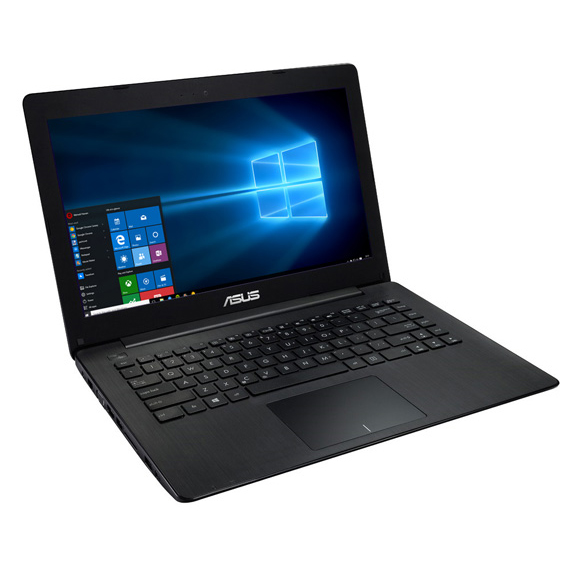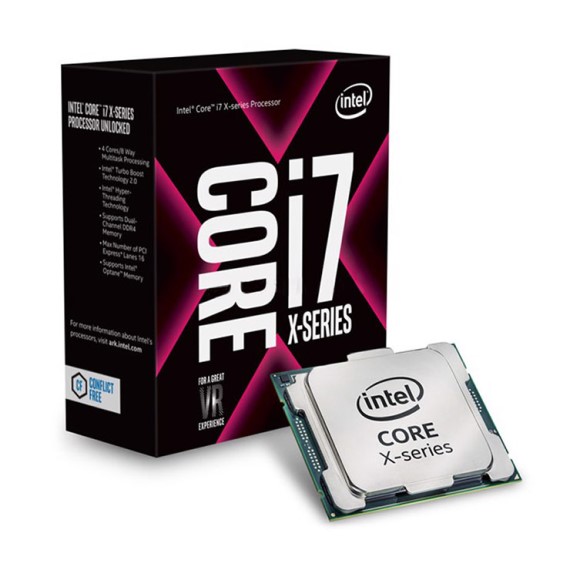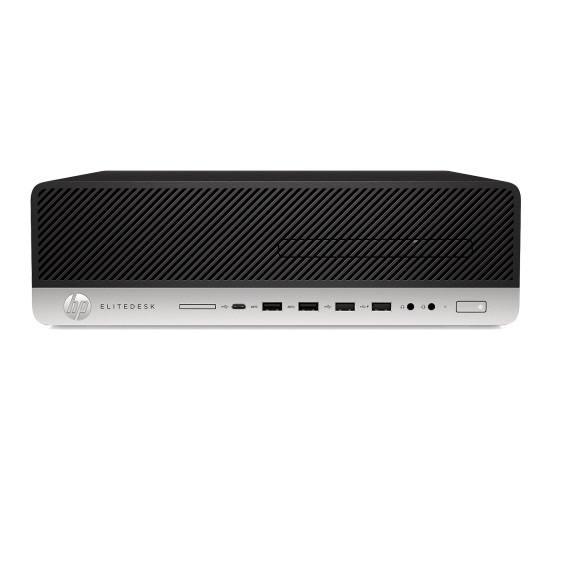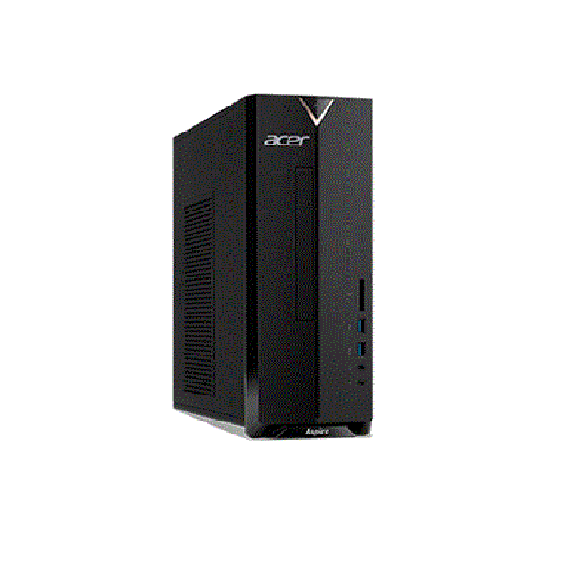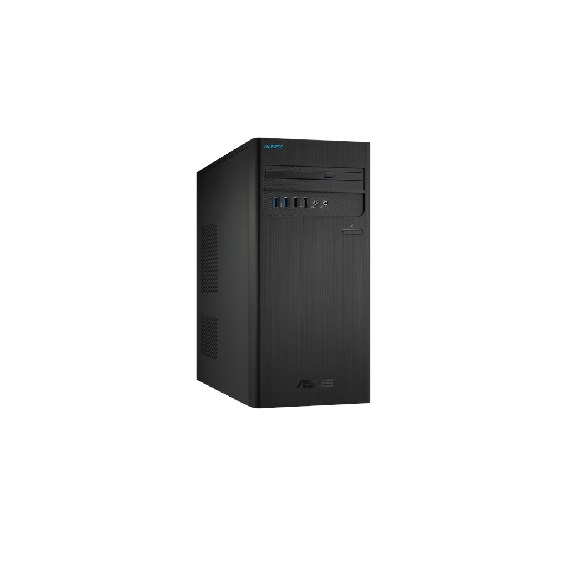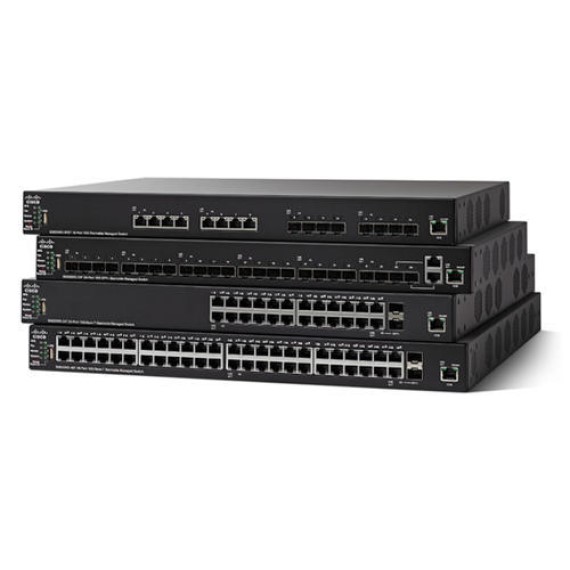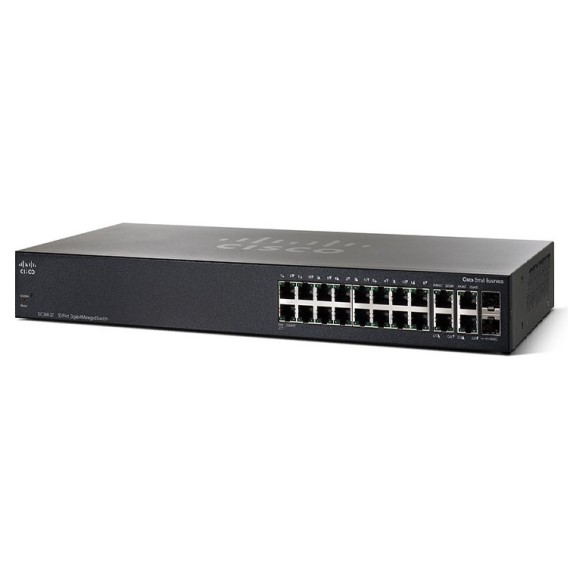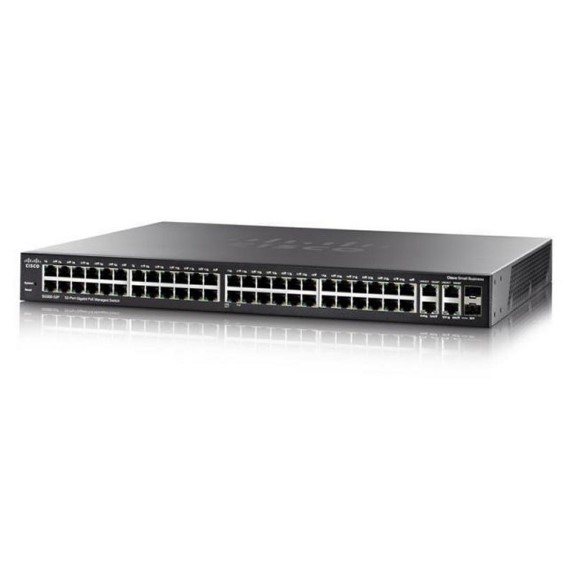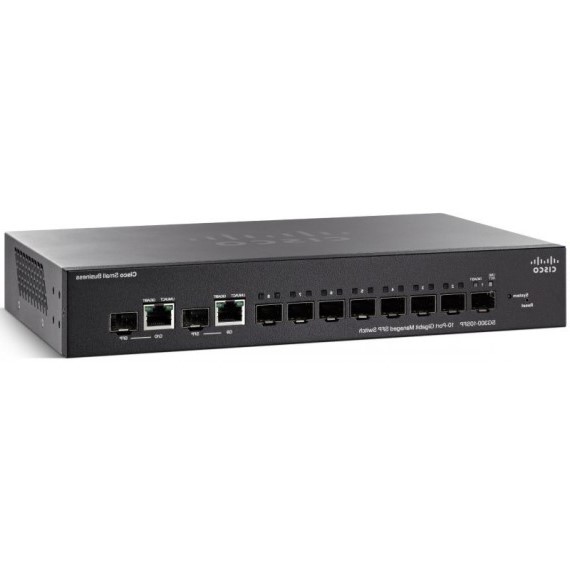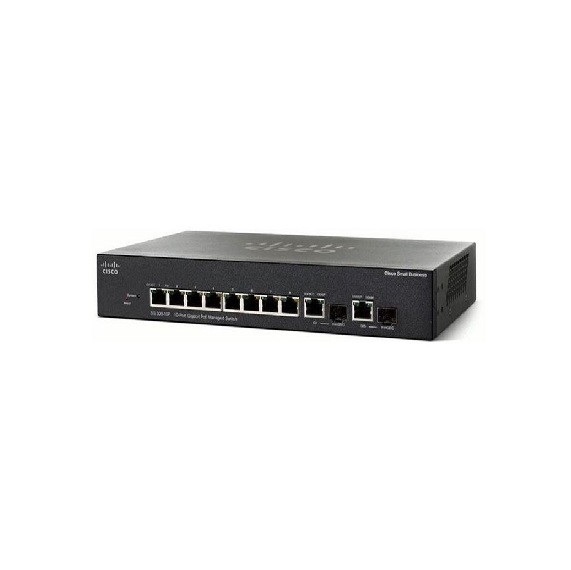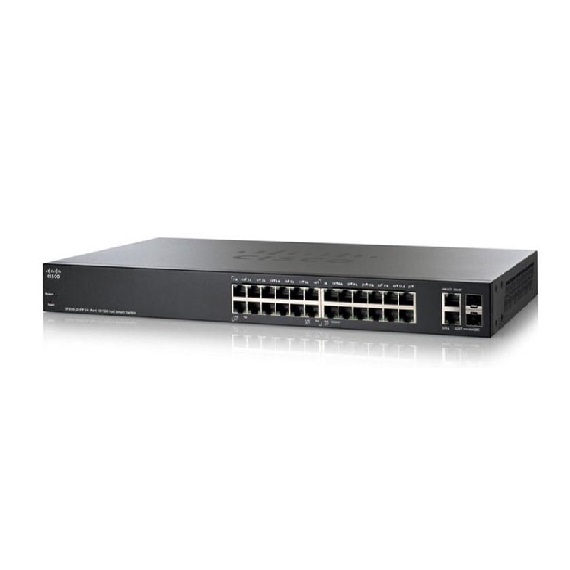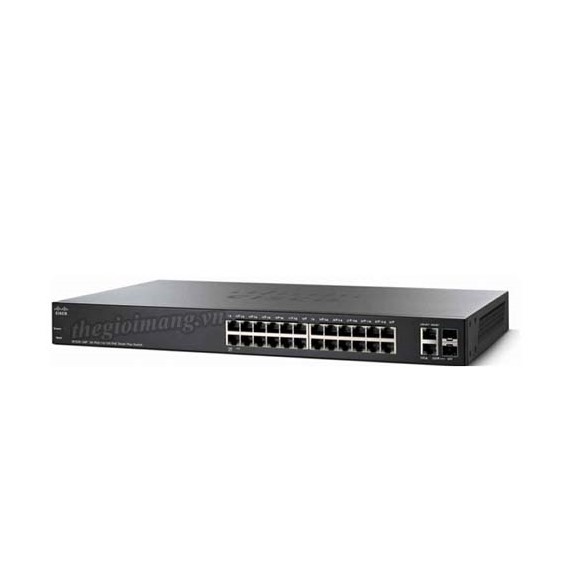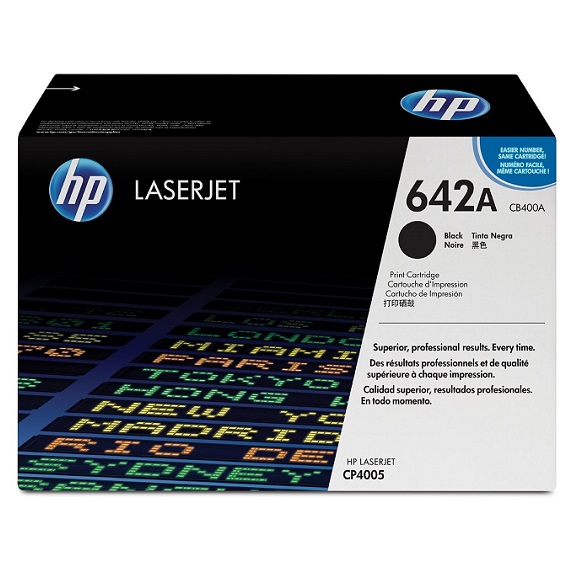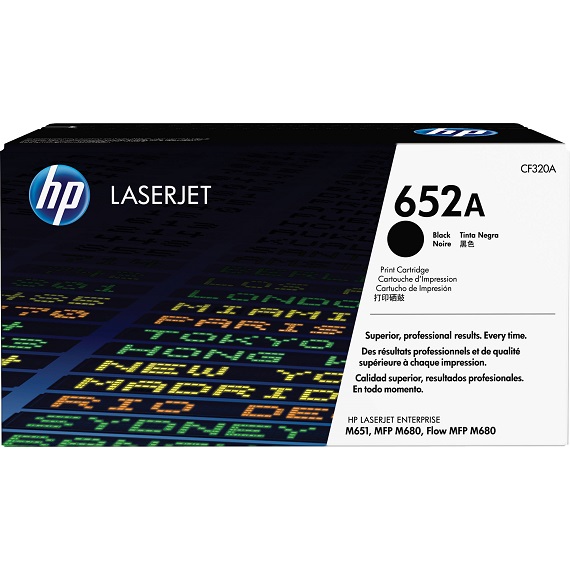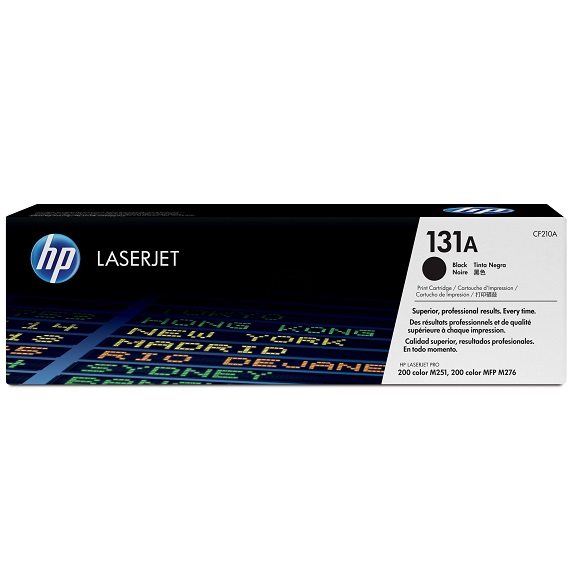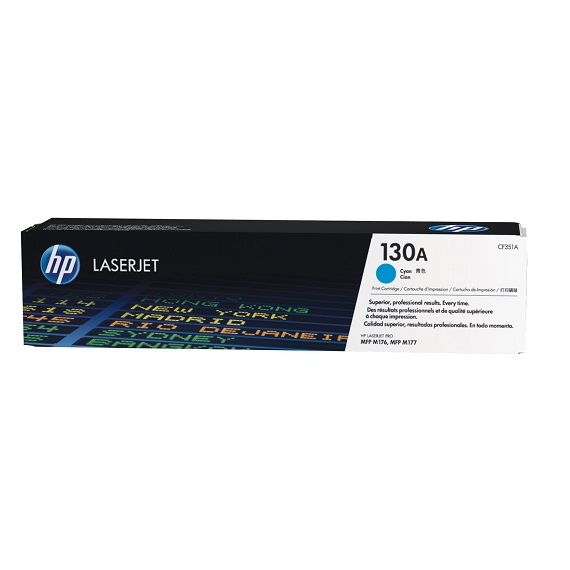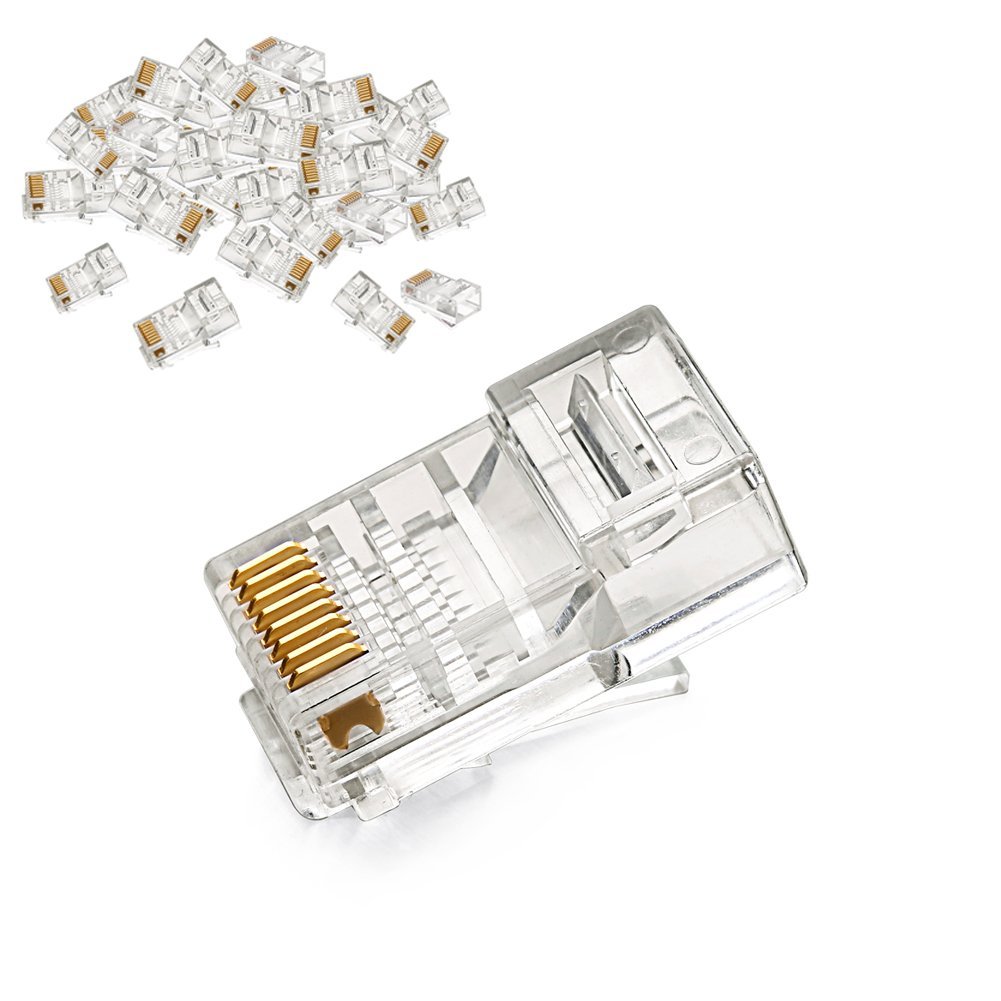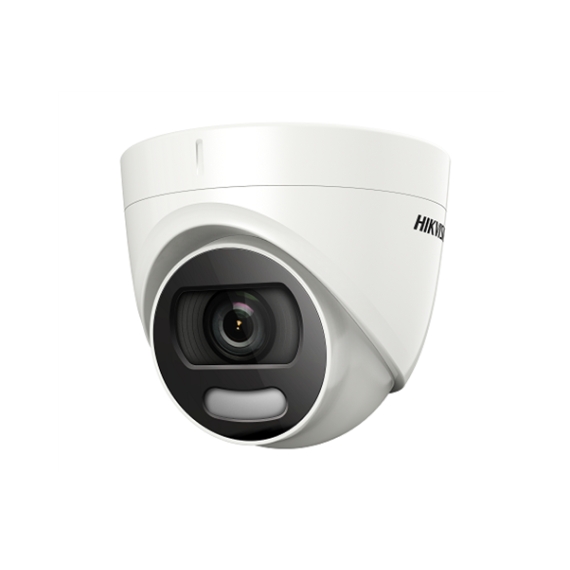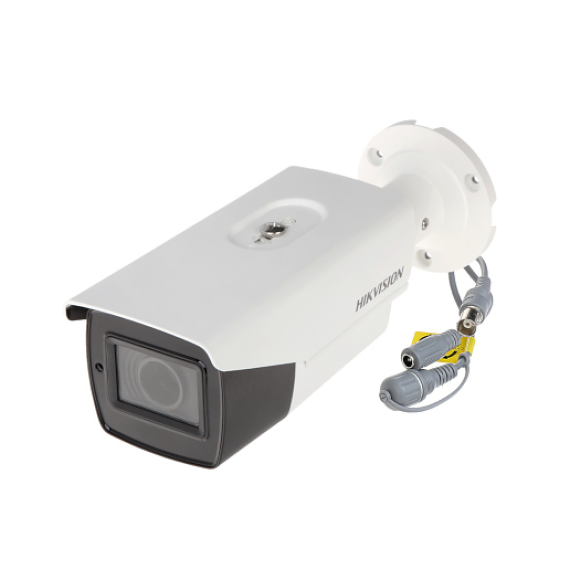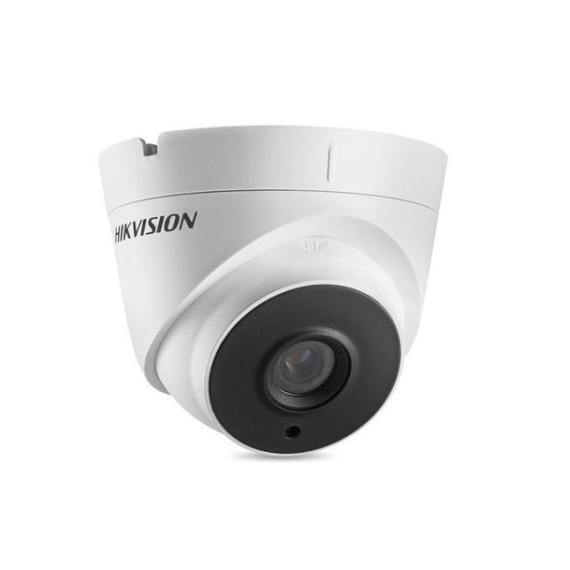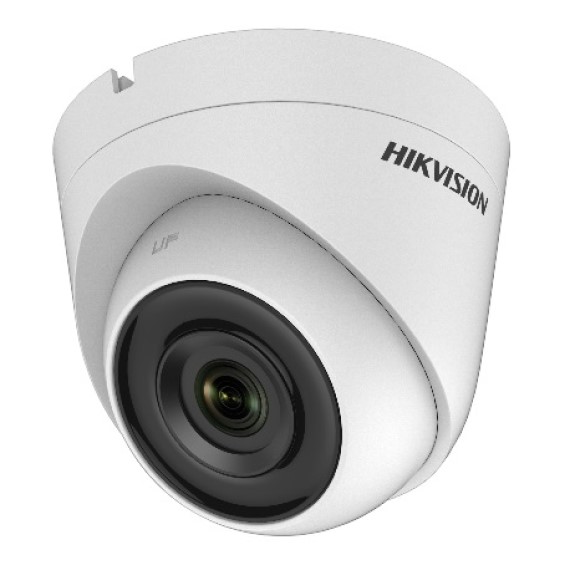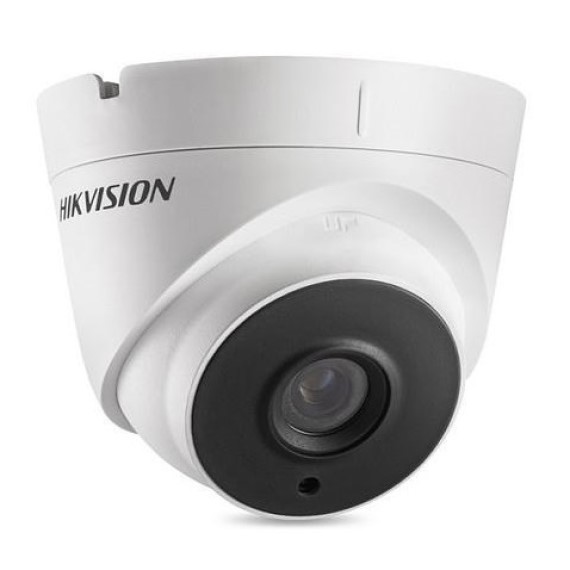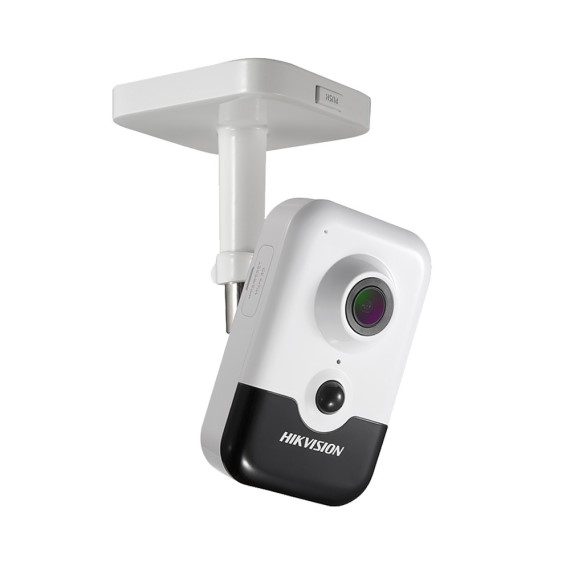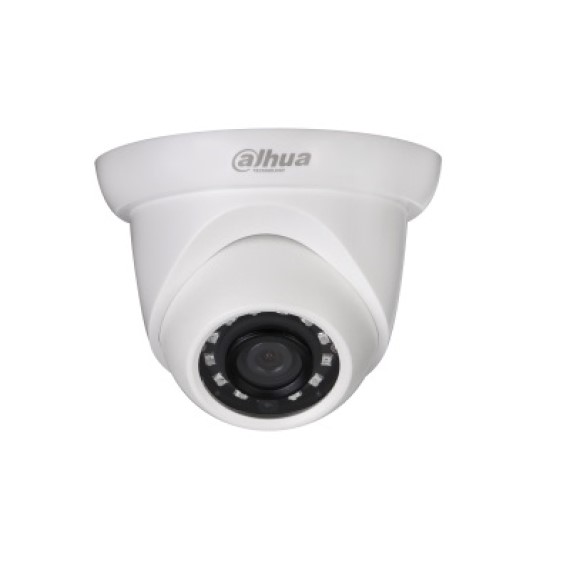Switch Cisco SG350X-48MP 48 Ports PoE+ 740W, 4 x 10GE Uplink
|
General Information |
|
|
Interface |
48 x 10/100/1000 PoE+ ports with 740W power budget, 4 x 10 GE (2 x 10GBase-T/SFP+ combo + 2 x SFP+) |
|
Manufacturer Part Number |
SG350X-48MP |
|
Product Series |
350X |
|
Product Model |
SG350X-48MP |
|
Hardware |
|
|
Capacity in Millions of Packets per Second (mpps) (64-byte packets) |
130.94 |
|
Switching Capacity in Gigabits per Second (Gbps) |
176 |
|
Buttons |
Reset button |
|
Cabling type |
Unshielded Twisted Pair (UTP) Category 5 or better; fiber options (SMF and MMF); coaxial SFP+ |
|
LEDs |
System, master, stack ID, link/speed per port |
|
Flash |
256 MB |
|
CPU |
800 MHz (dual-core) ARM |
|
CPU memory |
512 MB |
|
Packet Buffer |
24 MB |
|
Environmental |
|
|
Unit dimensions (W x H x D) |
440 x 44 x 450 mm (17.3 x 1.45 x 17.72 in) |
|
Unit weight |
6.69 kg (14.75 lb) |
|
Power |
100 - 240V 47 - 63 Hz, internal, universal |
|
Power Dedicated to PoE |
740W |
|
Number of Ports That Support PoE+ and PoE |
32 |
|
Number of Ports That Support 60W PoE, PoE+ and PoE |
16 |
|
Certification |
UL (UL 60950), CSA (CSA 22.2), CE mark, FCC Part 15 (CFR 47) Class A |
|
Operating temperature |
32° to 122°F (0° to 50°C) |
|
Storage temperature |
–4° to 158°F (–20° to 70°C) |
|
Operating humidity |
10% to 90%, relative, noncondensing |
|
Storage humidity |
10% to 90%, relative, noncondensing |
|
Acoustic noise and MTBF |
|
|
FAN (Number) |
4 |
|
Acoustic Noise |
0°C - 30°C: 43.2dB 50°C: 53.2dB |
|
MTBF @40C (hr) |
171,530 |
|
Miscellaneous |
|
|
Package Contents |
● Cisco Small Business 350X Series Stackable Managed Switch ● Power cord ● Mounting kit included with all models ● Serial cable ● Quick Start Guide |
|
Other Information |
|
|
Product Family |
350X |
Các tính năng của Switch Cisco SG350X-48MP
|
Layer 2 switching |
|||||||||||
|
Spanning Tree Protocol |
Standard 802.1d spanning tree support Fast convergence using 802.1w (Rapid Spanning Tree Protocol [RSTP]), enabled by default Multiple spanning tree instances using 802.1s (MSTP); 16 instances are supported |
||||||||||
|
Port grouping/link aggregation |
Support for IEEE 802.3ad Link Aggregation Control Protocol (LACP) ● Up to 8 groups ● Up to 8 ports per group with 16 candidate ports for each (dynamic) 802.3ad LAG |
||||||||||
|
VLAN |
Support for up to 4094 active VLANs simultaneously; port-based and 802.1Q tag-based VLANs; MAC-based VLAN Management VLAN Private VLAN with promiscuous, isolated, and community port Guest VLAN, unauthenticated VLAN, protocol-based VLAN, IP subnet-based VLAN, CPE VLAN Dynamic VLAN assignment using RADIUS server along with 802.1x client authentication |
||||||||||
|
Voice VLAN |
Voice traffic is automatically assigned to a voice-specific VLAN and treated with appropriate levels of QoS. Autovoice capabilities deliver networkwide zero-touch deployment of voice endpoints and call control devices |
||||||||||
|
Multicast TV VLAN |
Multicast TV VLAN allows the single multicast VLAN to be shared in the network while subscribers remain in separate VLANs. This feature is also known as Multicast VLAN Registration (MVR) |
||||||||||
|
Q-in-Q |
VLANs transparently cross over a service provider network while isolating traffic among customers |
||||||||||
|
GVRP/GARP |
Generic VLAN Registration Protocol (GVRP) and Generic Attribute Registration Protocol (GARP) enable automatic propagation and configuration of VLANs in a bridged domain |
||||||||||
|
Unidirectional Link Detection (UDLD) |
UDLD monitors physical connection to detect unidirectional links caused by incorrect wiring or port faults to prevent forwarding loops and blackholing of traffic in switched networks |
||||||||||
|
DHCP relay at Layer 2 |
Relay of DHCP traffic to DHCP server in a different VLAN. Works with DHCP option 82 |
||||||||||
|
IGMP (versions 1, 2, and 3) snooping |
Internet Group Management Protocol (IGMP) limits bandwidth-intensive multicast traffic to only the requesters; supports 4K multicast groups (source-specific multicasting is also supported) |
||||||||||
|
IGMP querier |
IGMP querier is used to support a Layer 2 multicast domain of snooping switches in the absence of a multicast router |
||||||||||
|
Loopback Detection |
Loopback detection provides protection against loops by transmitting loop protocol packets out of ports on which loop protection has been enabled. It operates independently of STP |
||||||||||
|
HOL blocking |
Head-Of-Line (HOL) blocking |
||||||||||
|
Layer 3 |
|||||||||||
|
IPv4 routing |
Wirespeed routing of IPv4 packets Up to 8K static routes and up to 256 IP interfaces |
||||||||||
|
IPv6 routing |
Wirespeed routing of IPv6 packets |
||||||||||
|
Layer 3 interface |
Configuration of Layer 3 interface on physical port, LAG, VLAN interface, or loopback interface |
||||||||||
|
CIDR |
Support for classless interdomain routing |
||||||||||
|
DHCP server |
Switch functions as an IPv4 DHCP server serving IP addresses for multiple DHCP pools/scopes Support for DHCP options |
||||||||||
|
DHCP relay at Layer 3 |
Relay of DHCP traffic across IP domains |
||||||||||
|
User Datagram Protocol (UDP) relay |
Relay of broadcast information across Layer 3 domains for application discovery or relaying of BOOTP/DHCP packets |
||||||||||
|
Stacking |
|||||||||||
|
Hardware stack |
Up to 4 units in a stack. Up to 208 ports managed as a single system with hardware failover |
||||||||||
|
High availability |
Fast stack failover delivers minimal traffic loss. Support link aggregation across multiple units in a stack |
||||||||||
|
Plug-and-play stacking configuration/management |
Master/backup for resilient stack control Autonumbering Hot swap of units in stack Ring and chain stacking options, autostacking port speed, flexible stacking port options |
||||||||||
|
High-speed stack interconnects |
Cost-effective high-speed 10G fiber and copper interfaces. Support LAG as stacking interconnects for even higher bandwidth |
||||||||||
|
Security |
|||||||||||
|
SSH |
SSH is a secure replacement for Telnet traffic. SCP also uses SSH. SSH versions 1 and 2 are supported |
||||||||||
|
SSL |
Secure Sockets Layer (SSL) encrypts all HTTPS traffic, allowing secure access to the browser-based management GUI in the switch |
||||||||||
|
IEEE 802.1X (authenticator role) |
RADIUS authentication and accounting, MD5 hash, guest VLAN, unauthenticated VLAN, single/multiple host mode, and single/multiple sessions Supports time-based 802.1X dynamic VLAN assignment |
||||||||||
|
Web-based authentication |
Web-based authentication provides network admission control through web browser to any host devices and operating systems |
||||||||||
|
STP BPDU Guard |
A security mechanism to protect the networks from invalid configurations. A port enabled for Bridge Protocol Data Unit (BPDU) Guard is shut down if a BPDU message is received on that port. This avoids accidental topology loops |
||||||||||
|
STP Root Guard |
This prevents edge devices not in the network administrator’s control from becoming Spanning Tree Protocol root nodes |
||||||||||
|
DHCP snooping |
Filters out DHCP messages with unregistered IP addresses and/or from unexpected or untrusted interfaces. This prevents rogue devices from behaving as a DHCP server |
||||||||||
|
IP Source Guard (IPSG) |
When IP Source Guard is enabled at a port, the switch filters out IP packets received from the port if the source IP addresses of the packets have not been statically configured or dynamically learned from DHCP snooping. This prevents IP address spoofing |
||||||||||
|
Dynamic ARP Inspection (DAI) |
The switch discards ARP packets from a port if there are no static or dynamic IP/MAC bindings or if there is a discrepancy between the source or destination address in the ARP packet. This prevents man-in-the-middle attacks |
||||||||||
|
IP/MAC/port binding (IPMB) |
The preceding features (DHCP snooping, IP Source Guard, and Dynamic ARP inspection) work together to prevent DoS attacks in the network, thereby increasing network availability |
||||||||||
|
Secure Core Technology (SCT) |
Makes sure that the switch will receive and process management and protocol traffic no matter how much traffic is received |
||||||||||
|
Secure Sensitive Data (SSD) |
A mechanism to manage sensitive data (such as passwords, keys, and so on) securely on the switch, populating this data to other devices, and secure autoconfig. Access to view the sensitive data as plaintext or encrypted is provided according to the user-configured access level and the access method of the user |
||||||||||
|
Private VLAN |
Private VLAN provides security and isolation between switch ports, which helps ensure that users cannot snoop on other users’ traffic; supports multiple uplinks |
||||||||||
|
Port security |
Ability to lock source MAC addresses to ports and limit the number of learned MAC addresses |
||||||||||
|
RADIUS/TACACS+ |
Supports RADIUS and TACACS authentication. Switch functions as a client |
||||||||||
|
RADIUS accounting |
The RADIUS accounting functions allow data to be sent at the start and end of services, indicating the amount of resources (such as time, packets, bytes, and so on) used during the session |
||||||||||
|
Storm control |
Broadcast, multicast, and unknown unicast |
||||||||||
|
DoS prevention |
Denial-of-Service (DoS) attack prevention |
||||||||||
|
Multiple user privilege levels in CLI |
Level 1, 7, and 15 privilege levels |
||||||||||
|
ACLs |
Support for up to 2K entries Drop or rate limit based on source and destination MAC, VLAN ID or IP address, protocol, port, DSCP/IP precedence, TCP/User Datagram Protocol (UDP) source and destination ports, 802.1p priority, Ethernet type, Internet Control Message Protocol (ICMP) packets, Internet Group Management Protocol (IGMP) packets, TCP flag; ACL can be applied on both ingress and egress sides Time-based ACLs supported |
||||||||||
|
Quality of service |
|||||||||||
|
Priority levels |
8 hardware queues |
||||||||||
|
Scheduling |
Strict priority and Weighted Round-Robin (WRR) |
||||||||||
|
Class of service |
Port based; 802.1p VLAN priority based; IPv4/v6 IP precedence/ToS/DSCP based; DiffServ; classification and remarking ACLs, trusted QoS Queue assignment based on Differentiated Services Code Point (DSCP) and class of service (802.1p/CoS) |
||||||||||
|
Rate limiting |
Ingress policer; egress shaping and ingress rate control; per VLAN, per port, and flow base; 2R3C policing |
||||||||||
|
Congestion avoidance |
A TCP congestion avoidance algorithm is required to minimize and prevent global TCP loss synchronization |
||||||||||
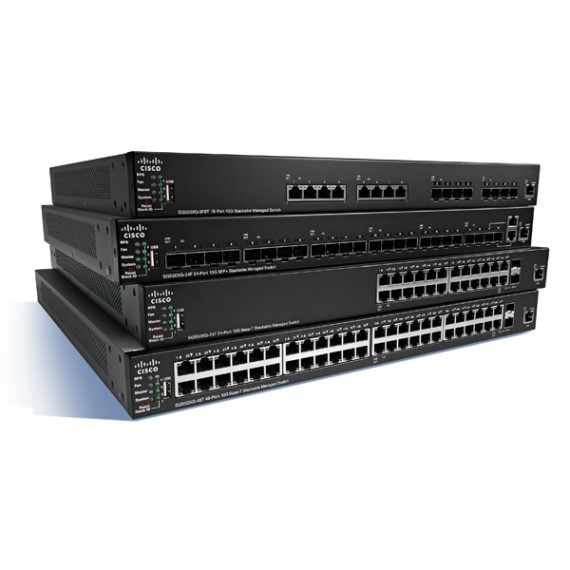
- 45.920.000đ

























